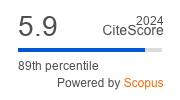Article | Open Access
The Affective Triad: Smartphone in the Ethnographic Encounter
| Views: | 2831 | | | Downloads: | 1877 |
Abstract: “Hanging out” and establishing “rapport” is an essential part of the ethnographic encounter in anthropology. But what happens when the smartphone, seemingly a distraction from the relationship in the making, creates a wall between the anthropologist and the interlocutor? While smartphones have been widely explored as a media technology used by the interlocutors, or as research tools, their affective grip on the researchers themselves has received less attention to date. Based on ethnographic fieldwork conducted with visitors of two youth centers in Vienna, Austria, in 2019, I argue that the moment when the smartphone becomes part of the affective triad, alongside the researcher and the interlocutor, also presents a window on the entanglement of digital technologies with everyday life. Moreover, affective ripples emerging from such irritations also expose underlying assumptions about how ethnographic encounters should ideally proceed and what constitutes rapport and “good” ethnographic relationships, seemingly a prerequisite for successful ethnographies. Hence, affective entanglements and irritations that arise in this context are not disturbances to be discarded or smoothed over in the ethnographic narratives. While the smartphone appears to impair the ethnographic encounter at first, its designed porosity allows the researcher to develop a particular sensitivity to issues of rapport, consent, and privacy, and to negotiate the space of potentiality of ambiguous, door-like situations, thus becoming a methodological blessing rather than a curse.
Keywords: affects; anthropology; digital ethnography; ethnography; privacy; rapport; small talk; smartphone; youths
Published:
© Suzana Jovicic. This is an open access article distributed under the terms of the Creative Commons Attribution 4.0 license (http://creativecommons.org/licenses/by/4.0), which permits any use, distribution, and reproduction of the work without further permission provided the original author(s) and source are credited.


